Merino wool in next to skin wear or merino base layer garments have many attributes that offer the wearer a unique experience that differs from many other fibres.
While merino wool attributes of moisture wicking warmth, summer coolness, odour resistance and fibre elasticity in the base layer merino garment are a given, finding the right merino comfort experience in your next to skin garment can be a challenge.
How do we as consumers select the most comfortable merino base layer for our activity whether running, hiking, travel or everyday wear?
What is Merino Base Layer Comfort
We begin by understan ding that there are different levels of comfort that can be measured in merino base layer or next to skin garments.
ding that there are different levels of comfort that can be measured in merino base layer or next to skin garments.
Each measured wool comfortmeter (wcm) score or rating, comes with a recommended best level of activity for that garment to ensure a good user comfort experience, in another words no prickle or itchy discomfort on the skin.
There are two WCM activity groups:
- 1. Active sports wear
- 2. Everyday fashion wear
Each of these two activity groups has three recommended merino comfort scores allocated to each activity level.
Lets take a closer look at what is behind merino base layer comfort
- How is the WCM rate translate onto merino base layer garment descriptions for the consumer
- Understand how merino comfort is measured in next to skin wear
- How does merino comfort score relate to merino base layer in sport and everyday wear
- What other information is on the merino next to skin garment label
- What is the recommended merino fleece specifications for consistent good user comfort experience when using wcm score in merino base layer fabrics
1.How Does the WCM Score Translate onto Garment Swing Tags for the Consumer?
How do we find that perfect option among the fantastic new base layer merino garment styles, fabric weight and fibre combinations are regularly coming onto the market.
To gain some perspective on what information is available to the consumer, we looked at a selection of quality online merino base layer garments tested for comfort level and noted the recommended activity type for the wcm score along side the garment swing tag or website descriptions. These very well-made merino base layer garments were tested through AWTA on the Wool ComfortMeter in December 2016 and early 2017.
| Merino Base Layer Brand | Merino Base Layer Garmernt | Fabric Weight | Fabric Composition | Garment Activity Description Label | Logos | WCM Score | WCM Recommended Activity Level for Comfort | Merino Base Layer Brand Website | Product Order Description |
|---|---|---|---|---|---|---|---|---|---|
| Macpac Singlet |  | 150g/m² | 100 % merino | Like a second skin, lightweight superfine and regulates your temperature. | Garment brand logo | 77 | Active wear-elite performance | Macpac Merino Thermals | Merino 150 singlet W 113521-BLKOO-10 |
| Bluey Merino Singlet | 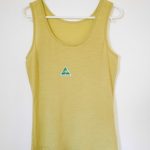 | 140g/m² | 90% ultrafine merino 10% polymide | Ultrasoft 16.3 micron luxurious sports singlet | Garment brand logo, made in Australia logo | 84 | Active wear-elite performance | Bluey Merino baselayers | Womens sports singlet SKU ext-140-WS-GA-s |
| Icebreaker Cami | 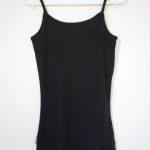 | 200g/m² | 100% merino | Everyday light weight cami bodyfit basics | Garment brand logo | 191 | Active wear-elite performance | Icebreaker Merino Thermals | Wmns Eday Cami blk 101307001 |
| Kathmandu Tshirt | 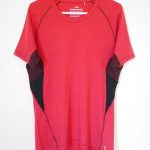 | 195g/m² | 96% merino wool 4% nylon | Next to skin comfort natural performance temperature control | Garment brand logo | 277 | Active wear-performance enhanced | Kathmandu Merino Baselayer | Gallium Wmns Merino Top v2 sku 14456/466/10, |
| Kathmandu Singlet |  | 140g/m² | 85% merino 15% silk | merinoLINK natural performance temperature control | Garment brand logo | 52 | Active wear-elite performance | Kathmandu Merino Silk | Tag missing bought off the hanger in store |
| I/O Merino Tshirt | 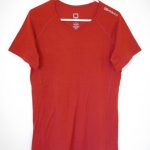 | 170g/m² | 96% enigma merino wool 4% elastane | 100 %Australian merino, luxurious soft performance in urban arena. MicroMerino® | Garment brand logo | 311 | Active wear-performance enhanced | IO Merino Next To Skin | Traverse (Altitude)Active Tee sku 14-111-59-03 |
| Baselayers Vest | 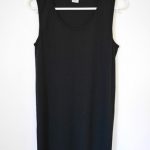 | 200g/m² | Pure merino wool | Perfect layer for cooler weather soft fine micron wool | Brandell logo | 261 | Active wear-active everyday | Baselayers Merino Wool | Model B4400(b) 1x1 rib |
| Dhbsport Merino Sleeveless | 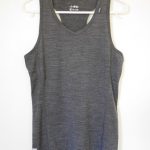 | 150g/m² | 100% merino wool | Lightweight superfine merino base layer for thermal regulation natural performance 18.5 | Garment brand logo | 152 | Active wear-elite performance | dhb merino base layer | Womens merino sleeveless base layer M_150 1608-5360113848 |
| Cederberg Thermal Top | 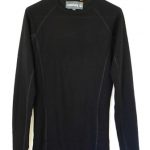 | ?g/m² | 100% virgin wool merino | Light weight first layer undergarment, all types of cold weather activities | Garment brand logo & Woolmark pure wool logo | 620 | Fashion everyday wear | Cederberg Merino Thermals | Long sleeved top Cederberg Adult's Baba Merino unisex |
| Ortovox Merino Long Sleeve Tee | 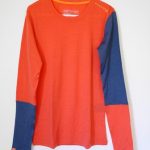 | 185g/m² | 100% merino wool | Rock'N'Wool developed for mountain use | Garment brand logo | 208 | Active wear-elite performance | Ortovox Merino Mountainwear | Merino 185 Rock'n'Wool model # 333006 |
| Mountain Design Tee | 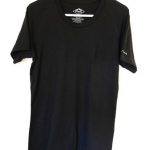 | 150g/m² | 100% merino wool | Merino base layer ultralight base layer or solo for travel or activity | Garment brand logo, woolmark pure wool logo | 364 | Active wear-active everyday | Mountain Design Merino Base Layers | MD 150 merino SS Tee W code 150586 |
2.How is Merino Base Layer Comfort Measured?
Retailers, spinners and garment makers now have access to a Wool ComfortMeter (wcm) through Australian Wool Testing Authority (AWTA) to help assist them to produce merino base layer or next to skin merino garments to a measured level of comfort for specific types of activities of their customers. This opportunity enables retailers and garment manufactures measure the fabric or the yarn to be used in the next to skin garment for a consistent comfort score rate that will give good user experience.
The flow on benefit for us as their customers, is we are able to access merino base layer garments that give no prickle next to skin experience or a good comfort level when wearing the garment for the recommended level or activity type. Research has demonstrated that the handle or feel of softness in the merino next to skin garment is not a good predictor of wearer comfort.
3.How Does Merino Comfort Score Relate to Activity
Basically, the recommended wcm scores are rated to cover two merino next to skin or base layer wearer groups  known as active sportswear and everyday fashion wear.
known as active sportswear and everyday fashion wear.
The group names define the types of activities of the two wcm score groups and reflect the expected level of activity or exertion of individuals in those groups.
Each activity level or type of activity within these two groups has a number of wcm score recommendations for the the most comfortable merino next to skin garment for that user.
Essentially, the lower the WCM score the more comfortable the merino base layer experience next to skin when the skin temperature is raised during high activity levels or exertion.
Recommended WCM Score Active Sport Wear
Active and sport wear group recommend the lower wcm 250-400 score range where skin temperature levels are expected to be elevated more than normal due to physical exercise and exertion.
Recommended WCM Score Fashion Everyday Wear
The everyday and fashion wear group will enjoy great next to skin experience with the recommended wcm score of 400-600 range where skin temperatures will be close to normal with little variation.
Read for more detail and tables on wcm score or rating of next to skin wear and their recommended activity type, read the ATWA and Sheep CRC: Next to Skin Wool Comfort and Handle
4.What Other Information is on the Merino Next To Skin Garment Label
Other information found on the next to skin merino labels aside from care instructions, give useful information which is helpful to understand the merino base layer garment.
4.1.Merino base layer fabric weight
4.2.Merino base layer brand
4.3.Merino logo
4.4.Merino base layer composition
4.1.Merino Base Layer Fabric Weight
Often described as grams of merino per square metre in the merino base layer garment and is usually located beside the garment brand, either on the swing tag or packaging. Typically base layer merino is next to skin or the first layer of clothing and typically the amount of merino will range between 150 to 20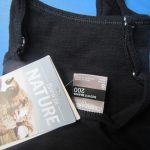 0 gms per square metre.
0 gms per square metre.
4.2.Merino Base Layer Brand
Behind every brand there is description of the brands values or ethos of what they are about, what is important to them and their commitment to those values. These may also cover the micron range (ultrafine, superfine or fine), traceability of merino sourced for their merino next to skin garments, animal welfare and environmental ethics associated to their merino source.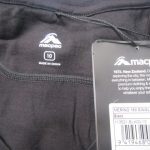
Once familiar with the garments brand, their standing within the merino next to skin and merino wear retail sector, you will associate previous experiences of their merino garment comfort, quality and style with their company brand or logo.
Brand websites do give information on their merino base layer or next to skin garments which varies widely from specific to general. Click on the image in the table to see the base layer garment brands website descriptions.
4.3.Logos on the Next To Skin Merino Garment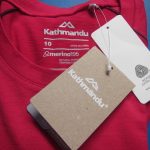
Base Layer Brand Logo
Some merino base layer garments may also have extra information through the addition of an accredited body’s logo signifying further compliance of a specific sort or meaning.
Pure Wool and Wool Blend Logos
Some well-known logos including Woolmark’s merino mark apparel logos cover the quantity of merino in the merino base layer garment from pure merino to various merino blends, fabric quality, range of micron and the activity group that the particular merino mark logo is best suited.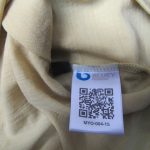
Base Layer Merino Traceability
Other logos include traceability from farm to finished product, an emerging story about the identity of the merino garment beginning where the merino is sourced at the farm gate.
Ethical Merino Logos
Other merino base layer garment logos include country of origin labels and where garment is made to animal welfare logos to signify ethical non-museled merino to no tail docking merino wool.
4.4.Merino Base Layer Fabric Composition
Pure Superfine Merino
As mentioned earlier the measure is given in grams of merino per square metre of the merino base layer fabric. The higher the grams the more merino in the fine knit fabric. The amount of merino in base layer merino will depend on the primary need your activity level, whether for sport comfort or extra base layer warmth.
Superfine Merino Blends
The other level of merino relates to the composition of the fabric, how much of the next to skin fabric is 100% merino or merino blend. Base layer merino blends can include other natural fibres such as silk and cashmere. The blends can also include of varying levels of specialist polyester fibres, each in balance to enhance merino garment performance and comfort level.
Merino Base Layer Fabric Description
The composition descriptions are usually found on the garments inner tag. Some merino base layer garments may also have a logo or tag that will specify the micron of the merino used or the activity the blend is designed, i.e. Woolmarks merino perform, cool wool or merino sport.
5. Recommended Raw Merino Fleece Specifications For Best Merino Base Layer Comfort
There are a number of factors that contribute to wcm score in a merino next to skin garment from the raw or greasy merino wool type sourced to factors along the wool processing line.
Briefly it appears that a major determent toward a favourable wcm score is in sourcing the right superfine merino for processing, whilst processing factors such of yarn spin quality and fabric evenness and tenacity are considered secondary contributing factors
Primary Determent of Comfort in Merino Next to Skin Fabric
When sourcing s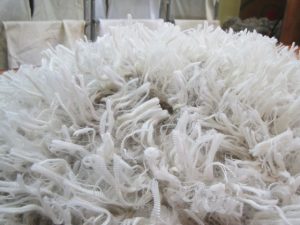 uperfine merino wool for a low wcm score for increased comfort next to skin, the major determents are micron and coarse edge micron (CEM).
uperfine merino wool for a low wcm score for increased comfort next to skin, the major determents are micron and coarse edge micron (CEM).
Current recommendations are superfine merino of 18 micron or less with a CEM 30 of less than 3% in the raw merino fleece measurements.
Superfine merino by definition is 18.5 to 15.6 micron. CEM measures how far from the mean micron the stronger or coarser fibres are in the sample. CEM 30 refers to those fibres are over 30 micron identified as responsible for the prickle sensation in wool next to skin in previous research. The higher the percentage over 30 micron the more skin irritation experienced.
Merino Base Layer Comfort Identification for Consumers
There is a wide range of quality stylish merino base layer garments on the market with a comfort rating to suit a variable array of activities from everyday comfort and fashion to increased comfort need in active wear next to skin merino garments.
While wcm scores or uniform rating are yet to be translated to labels and swing tags to assist the consumer, there are some marketing label descriptions that do assist. It does seem that for consumers to confidently find the best merino base layer comfort for a specific activity level in mind, is a bit of challenge without a uniform comfort level for activity descriptions being used.
Sources
Bruce A McGregor, Maryam Naebe, Henry Wang, David Tester, James Rowe. 15 October 2015. Relationships between wearer assessment and the instrumental measurement of the handle and prickle of knitted wool fabrics. Textile Research Journal. DOI: 10.1177/0040517514551460
Wang, Henry, Quiniou, Cecilia, Naebe, Maryam and Crowe, David 2016, Predicting fabric prickle propensity by testing yarns on the Wool ComfortMeter, in IWTO 2016: 85th International Wool Textile Organisation Congress: Wool for Future Generations, IWTO, Brussels, Belgium.
Australian Wool Exchange Ltd. 2016-2018 Classing Superfine. Code of Practice Preparation of Australian Wool Clips. Pg 56
